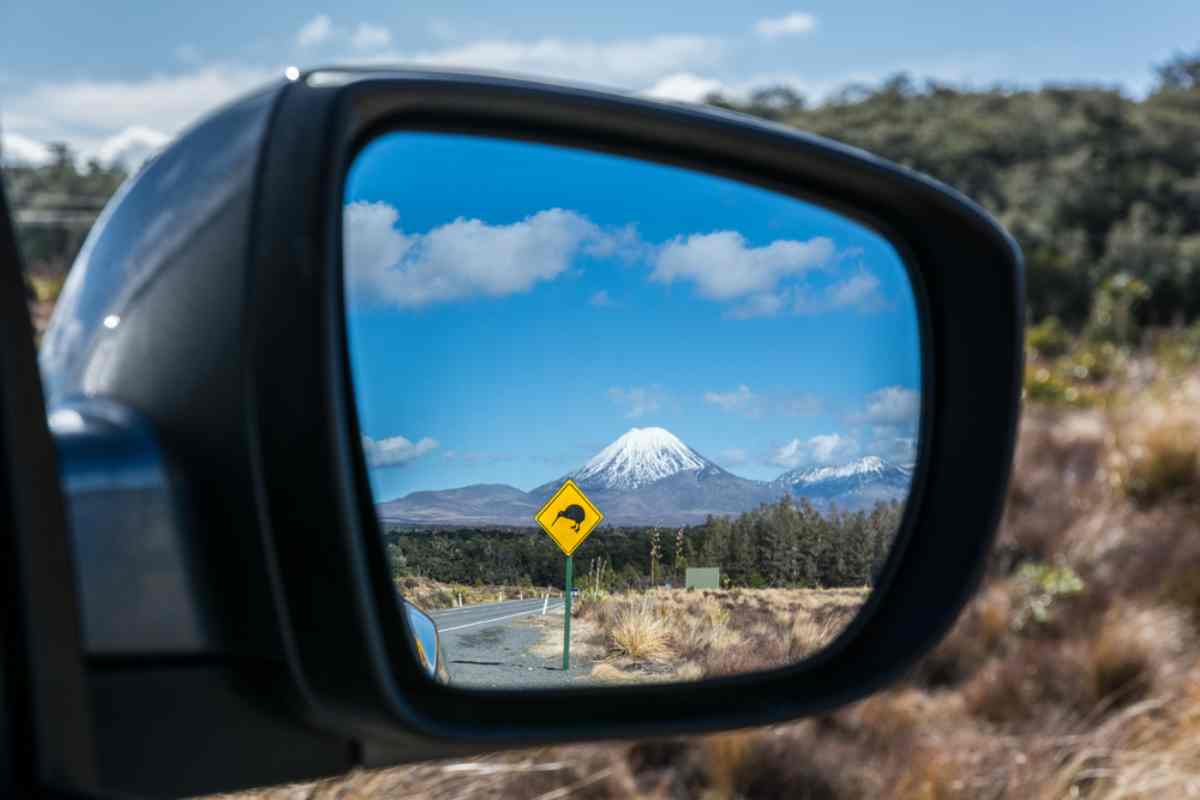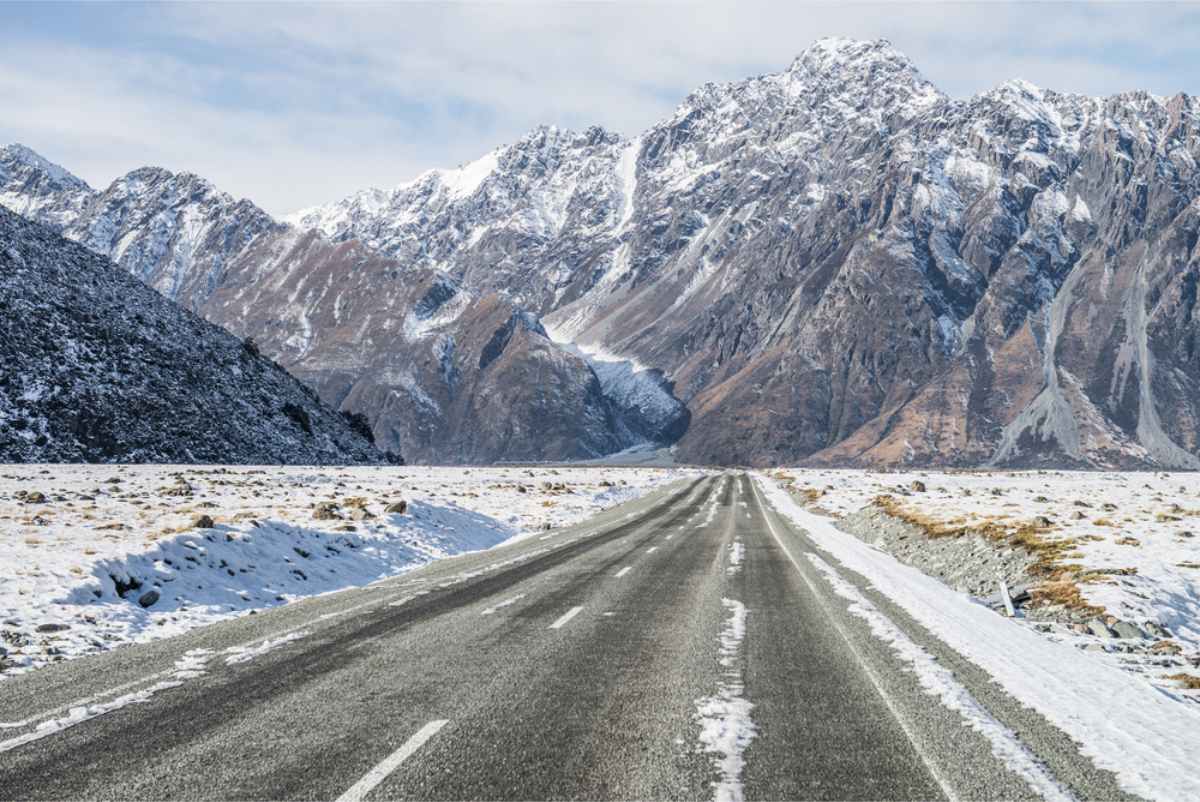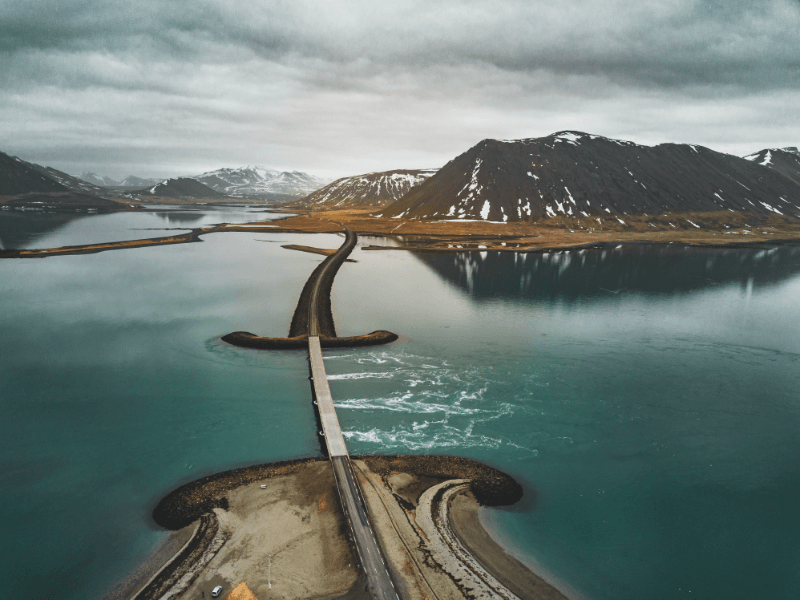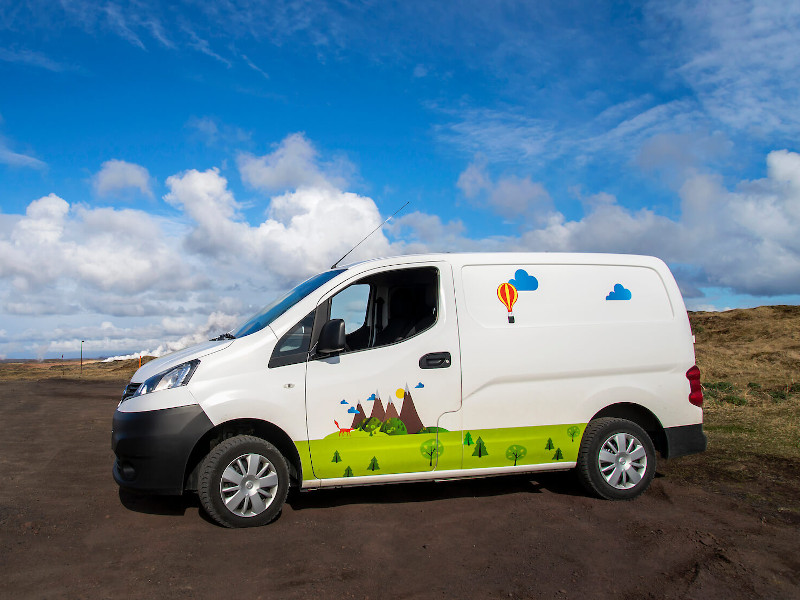New Zealand is renowned for its picturesque landscapes, diverse outdoor activities, and unique wildlife, making it a perfect destination for a road trip. Driving in New Zealand offers you the freedom to explore the country at your own pace, visit lesser-known gems, and tailor your journey to your interests and preferences.
What to Expect When Driving in New Zealand
This comprehensive guide covers everything you need to know before embarking on your self-drive adventure. From understanding local road rules to navigating scenic routes, we'll provide expert tips and advice to ensure you have a safe and enjoyable journey. Here's some key highlights:
- Driving is on the left-hand side
- Roads can be narrow and winding, especially in rural or mountainous areas
- Scenic routes abound, so allow extra time for stops
- Weather can change quickly, impacting driving conditions
Choosing the Right Vehicle in NZ
Selecting the right vehicle is essential for a comfortable and enjoyable road trip. Consider factors such as the number of passengers, available luggage space, and the type of terrain you'll be traversing. If you plan on visiting remote or mountainous areas, a 4WD vehicle may be a wise choice. For longer trips or those looking for a camping experience, consider hiring a campervan or motorhome.

Before You Hit the Road
Driving in New Zealand is a one-of-a-kind experience, especially if you’re exploring by campervan. But before you set off, it’s important to know the NZ driving rules, understand how road conditions can change, and prepare for the unique challenges of a road trip here.
License and Age Requirements
To legally drive in New Zealand, you must possess a valid driver's license from your home country or an International Driving Permit (IDP). Your license must be in English, or you may need to carry an official translation. The minimum age for driving in New Zealand is typically 16 for cars and 18 for motorcycles, but rental companies may have higher age requirements or charge an additional fee for young drivers.
- You must be at least 21 years oldto rent a car or campervan
- An International Driving Permit (IDP) is recommended if your license is not in English
- Your license must be valid for the vehicle class you intend to drive
Car Rental Tips and Recommendations
To secure the best deal on your rental car, book well in advance and compare prices from multiple rental agencies. Be aware of any additional fees or restrictions, such as one-way rental surcharges or daily mileage limits. It's also important to review the rental agreement thoroughly before signing.
- Book in advance, especially during peak seasons (Dec-Mar)
- Choose a vehicle that suits your itinerary (e.g., 4WD for off-the-beaten-path)
- Check rental inclusions like insurance, GPS, unlimited mileage
Insurance and Roadside Assistance
Car rental companies generally offer insurance options, including Collision Damage Waiver (CDW) and Theft Protection. It's essential to understand what's included in your coverage and any potential liabilities.
You may also want to consider purchasing additional coverage or checking if your existing travel insurance policy covers car rentals. Additionally, inquire about roadside assistance options in case of a breakdown or emergency. Some rental companies provide this service as part of the rental package or offer it as an add-on.

New Zealand Road Rules and Regulations
Driving on the Left Side of the Road
One of the most crucial driving in New Zealand rules to remember is that vehicles drive on the left side of the road. It may take some time to adjust if you're used to driving on the right, so be cautious and give yourself plenty of space while maneuvering.
Speed Limits and Traffic Signs
New Zealand speed limits are posted in kilometers per hour (km/h), with a maximum speed limit of 100 km/h on highways and 50 km/h in urban areas. These limits may vary depending on road conditions or local regulations, so pay close attention to traffic signs.
For a guide on New Zealand traffic signs, visit: New Zealand Road Code
Seatbelt Laws and Child Safety
Seatbelts are mandatory for all vehicle occupants in New Zealand, and failure to wear one may result in a fine. Children under seven years old must be secured in an approved child restraint. Most rental companies can provide child restraints for an additional fee or allow you to use your own if it meets New Zealand safety standards.
For more information on child restraints, visit: New Zealand Transport Agency - Child Restraints

Cell Phone and Alcohol Restrictions
Using a handheld cell phone while driving is illegal in New Zealand, and drivers caught doing so may receive a fine and demerit points. If you need to make a call, use a hands-free device or pull over to a safe location. New Zealand has strict drink-driving laws, with a blood alcohol limit of 0.05% for drivers aged 20 and older and zero tolerance for those under 20.
Penalties for drink-driving include fines, license suspension, or even imprisonment, depending on the severity of the offense.
Roundabouts and Give Way Rules
When approaching a roundabout, give way to traffic already in the roundabout and coming from your right. Once you've entered the roundabout, signal your exit to indicate your intended direction. Familiarize yourself with the New Zealand give way rules to ensure a safe driving experience.
Navigating and Staying Connected
Using Maps and GPS Devices
While a GPS device can be an invaluable tool for navigating New Zealand's roads, it's always a good idea to carry a physical map as a backup. Most car rental companies offer GPS devices as an add-on, or you can use your smartphone's GPS functionality if you have a local SIM card or data roaming.

Mobile Phone Coverage and Wi-Fi Hotspots
New Zealand's mobile phone coverage is generally reliable in urban areas, but may be limited in remote or rural regions. It's worth investing in a local SIM card or a mobile Wi-Fi hotspot to stay connected during your road trip. Numerous cafés, libraries, and visitor centers offer free Wi-Fi, though the connection speed and quality may vary.
Staying Informed with Road and Weather Updates
To ensure a safe journey, regularly check road and weather conditions, especially if driving in New Zealand in winter or traveling in mountainous areas. Visit the New Zealand Transport Agency and Metservice websites for the latest updates on road closures, hazards, and weather forecasts.

Driving Tips for a Safe and Enjoyable Journey
Adjusting to Local Road Conditions
New Zealand's roads can be narrow, winding, and sometimes unsealed. It's essential to adjust your driving speed accordingly and maintain a safe following distance, especially in wet or icy conditions. Be prepared for one-lane bridges and always give way to oncoming traffic if necessary.

Planning Your Route and Rest Stops
Plan your route ahead of time and allow for rest stops every two hours or as needed. New Zealand's landscapes are breathtaking, and you'll want to stop frequently to take photos, stretch your legs, and enjoy the scenery. Use websites like AA Travel to calculate travel times and distances between destinations.
Avoiding Driving Fatigue
Fatigue is a significant contributor to road accidents in New Zealand. Make sure you get a good night's sleep before embarking on a long drive, and avoid driving during times when you'd typically be sleeping. If you start to feel tired, take a break, have a snack, or even take a short nap if necessary.
Dealing with Unexpected Situations and Wildlife
When driving in New Zealand, you may encounter livestock or wildlife on the road. Slow down, be patient, and give animals plenty of space to move. In the event of a breakdown or accident, turn on your hazard lights, move your vehicle to a safe location if possible, and call for assistance.

Scenic Drives and Must-Visit Destinations
North Island Highlights
The North Island has some of the largest cities and driving between them is a good opportunity to discover amazing landscapes.
- Auckland to Cape Reinga: This scenic drive takes you through lush forests, pristine beaches, and historical sites, ending at the iconic Cape Reinga Lighthouse.
- Coromandel Peninsula: Discover picturesque beaches, native bush, and quaint coastal towns on this popular North Island route.
- Napier to Wellington: Experience the stunning Hawke's Bay wine region, rugged coastline, and the art deco city of Napier on this journey.

South Island Highlights
New Zealand's South Island is home to some of the most impressive scenery in the country, and what better way to explore them than with a road trip.
- Christchurch to Queenstown: Traverse the majestic Southern Alps, visit the turquoise waters of Lake Tekapo, and explore the adventure capital of Queenstown.
- West Coast: Experience the dramatic landscapes of the West Coast, including Punakaiki's Pancake Rocks, Fox and Franz Josef Glaciers, and the stunning Milford Sound.
- Marlborough and Nelson: Discover New Zealand's famous wine regions, pristine beaches, and the stunning Abel Tasman National Park.

Traveling with a Campervan or Motorhome
Choosing the Right Campervan or Motorhome
Selecting the right campervan or motorhome for your road trip depends on your budget, the number of passengers, and the desired level of comfort and amenities. Visit our website for a wide range of campervan and motorhome options to suit your needs.
Freedom Camping Rules and Regulations
Freedom camping allows you to park your self-contained campervan or motorhome overnight in designated areas for free. Be aware of local restrictions and ensure you follow all guidelines to protect New Zealand's environment. For a comprehensive list of freedom camping sites, visit Rankers.
Campervan Parks and Campgrounds
New Zealand offers numerous campervan parks and campgrounds, providing facilities such as showers, laundry, and kitchen amenities. For a list of campervan parks and campgrounds, visit Top 10 Holiday Parks and Holiday Parks Association New Zealand.
Driving Etiquette and Sustainable Travel
Sharing the Road with Cyclists and Pedestrians
Be courteous to cyclists and pedestrians by giving them plenty of space when passing and adhering to the speed limits in urban areas. When possible, use designated cycle lanes and shared paths to ensure everyone's safety on the road.

Environmental Responsibility and Leave No Trace Principles
As a visitor to New Zealand, it's essential to practice responsible and sustainable travel. Follow the Leave No Trace principles, such as disposing of waste properly, respecting wildlife, and minimizing your impact on natural and cultural resources.
Supporting Local Businesses
One of the best ways to contribute positively to New Zealand's economy and communities is by supporting local businesses. Choose to eat at locally-owned cafés and restaurants, shop at small businesses, and engage in local experiences to make your road trip more authentic and rewarding.
New Zealand Road Trip Checklist
Driving Rules & Legal Requirements
- Valid driver’s license (in English or with an official translation/IDP)
- Minimum driving age checked (usually 21+)
- Understand left-side driving rules
- Know local speed limits and signage
- Seatbelts for all passengers
- No use of mobile phones while driving
Campervan Essentials
- Check if your campervan is self-contained (for freedom camping)
- Full tank of fuel or electric charge
- Water tank filled (if applicable)
- Grey water tank emptied
- Gas for cooking/heating checked
Road Safety & Navigation
- GPS or offline maps downloaded
- Emergency roadside assistance contact saved
- First aid kit onboard
- Spare tire and jack
- Check the weather forecast and road conditions (especially in winter or mountainous regions)
Camping & Overnight Stay
- Pre-booked campsites (especially in peak season)
- DOC campsite pass (if needed)
- Know freedom camping laws
- Power cords/adapters for powered sites
Comfort & Road Trip Extras
- Snacks and drinks stocked
- Sunglasses and sunscreen
- Travel playlist or audiobooks ready
- Trash bags for waste
- Warm clothes and rain gear
Ready to start your road trip in New Zealand?
 Driving in New Zealand offers a unique and unforgettable adventure, allowing you to discover the country's awe-inspiring landscapes, rich culture, and friendly locals. By preparing thoroughly, following local road rules, and practicing responsible travel, you'll have a safe and memorable journey through one of the world's most beautiful destinations. So buckle up, hit the open road, and enjoy the ride!
Driving in New Zealand offers a unique and unforgettable adventure, allowing you to discover the country's awe-inspiring landscapes, rich culture, and friendly locals. By preparing thoroughly, following local road rules, and practicing responsible travel, you'll have a safe and memorable journey through one of the world's most beautiful destinations. So buckle up, hit the open road, and enjoy the ride!
FAQs: Driving in New Zealand
Is it safe to drive in New Zealand?
Yes, but you must stay alert due to narrow roads and rapidly changing conditions.
Can tourists drive with their home license?
Yes, if it's in English. If not, carry an IDP.
Are road signs in English?
Yes, all signs are in English and follow international symbols.
What side of the road do New Zealanders drive on?
The left side.


 By
By








